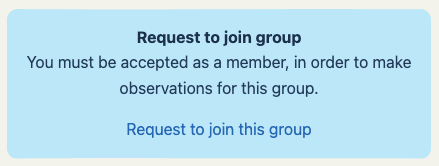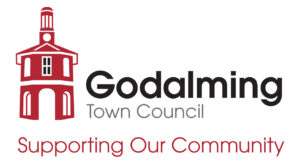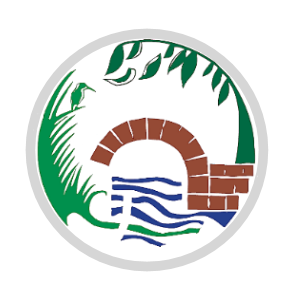River Wey
We need your help getting a current picture of the River Wey Catchment! Can you help?
On 18-19 March 2023, join the River Wey Trust in understanding water quality across the River Wey catchment! In partnership with ZERO Guildford, Water Rangers and many local environmental groups, we’re aiming to collect data at between 100 and 200 sample locations!
Visit ZERO Guildford Event for World Water Day on Saturday, 18 March, 2023 from 10:30am – 12:30pm to choose your sample location(s) and get trained on the protocol.
Where we’re testing
The River Wey Catchment starts in Haslemere (Southern Branch) and Alton (Northern Branch), meets in Tilford, flows through Godalming, Guildford and Woking, and into the Thames. Other tributaries (those are smaller waterways that ‘contribute’ to the main waterway) include the Addlestone Bourne, River Tillingbourne, River Ock, Oakhanger, Hollywater, Frensham ponds, Virginia Water, Hoe Stream, Caker stream, and more! There’s 42 waterbodies in this catchment. You can explore them on the Environment Agency Catchment website. As you can see, we have our work cut out for us.

Training video (watch on Youtube)
How to participate
Step 1: Get a testkit and get trained
There are opportunities throughout the days before to meet up with some local groups to get your kit and choose a location. The main event is at ZERO Guildford Event for World Water Day on Saturday, 18 March, 2023 from 10:30am – 12:30pm, where we’ll also be announcing some upcoming new goals and projects!
- Guildford: Saturday, 18 March from 10:30am – 12:30pm ZERO Guildford Event for World Water Day
- Haslemere: Saturday, 18 March 2:30pm: Meet Alistair anytime between 10am and 4pm and try out his augmented reality sandbox at the Great Green Get Together
- Farnham: Friday, 17 March from 7pm: United Reformed Church, Farnham (GU9 7RP). Meet Kat and Alistair before the What Next? gathering ‘collaborating to create a better world’, which runs from 7:30pm – 9:30pm. Those attending the meeting will be able to sign up before or after!
Step 2: Join the group’s dataset
Entering in your data is an integral part of the process. We encourage you to use your web browser on your phone to enter in data right away. There are data sheets we encourage you to use as backup.
NOTE: If you struggle to enter the data in, you can email photos of your data sheets and location photos to water.testers@riverweytrust.org.uk.
If you are meeting with a local leader, they will ‘invite you’ to the group using your email. You’ll then have to create an account and confirm it. From there, follow the ‘entering data’ steps below.
If you aren’t directly invited, follow these steps:
- Sign up for a free Water Rangers account
- Confirm your account (through an email link
- Visit the Water Rangers group, River Wey Catchment Snapshot
- Click on “Request to join”
- A team lead will “accept your request”. You will then be able to add data to our dataset.

Before you go out
SAFETY FIRST. This water testing experience is supposed to be fun! If you can’t easily reach the sample location, or if you ever feel unsafe, do not test. Test with a friend, be extra careful around swift moving water. You’re testing at your own risk, so we’re asking that you don’t take any.
- Find a clean sample container (like a yoghurt pot or cut off milk container). Ensure it’s well cleaned and rinsed. You’ll use this to collect a water sample! For extra safety, you can tape or tie your container onto a stick or pole to be able to reach the water.
- Dress for success: it may be muddy near your site.
- Bring a friend and let someone know where you’re going.
- Review our code of conduct: remember, this evidence is politically neutral!
Step 3: Testing and adding in data

Your Testkit! The pouch contains an instruction sheet, two sample sheets, a thermometer, 5 teststrips, 2 phosphate tests and 2 nitrate tests (instructions for nitrates on the back of the bag), and a sticker.
- Go to your sample spot. We encourage you to use what3words and enter in your reference code assigned to you on your field sheet.
- Ensure you can safely reach the water. If you cannot, you can select a nearby site that is more accessible. Please make a note of the change in your notes! When in doubt, do not test.
- Get out your sample sheets and open the web browser (chrome, safari, etc) on your phone (follow the steps for entering data below).
- Make note of the weather and do your visual assessment (Qualitative questions) and take reference photos.
- Record air temperature from your thermometer.
- Rinse your sample cup 3 times in the water you will be testing.
- Take a water sample, ensuring you take it from as deep as you can without scraping the bottom, ideally 15cm below the surface.
- Take water temperature reading.
- With dry hands, dip in one teststrip for 2 seconds. Record chlorine, pH, alkalinity & hardness.
- Follow instructions for nutrients, waiting 5 minutes for phosphorus and 3 minutes for nitrates (more details on method are in the video above!).
- Enter in your data (see information below)
- Pack up your supplies. NOTE: do not put used test strips or nutrients back into the packs as they need to stay dry!
- Post action shots of you and your fellow water testers on social media, tagging with #RiverWey
Entering data
- To easily find the place to add your data, enter in https://app.waterrangers.ca/locations/IDNUMBER located on your sample sheets. For example, River Wey, Allee’s Meadow is 9275. So, we’d enter in https://app.waterrangers.ca/locations/9275
- Click “Add observation”.
- Enter in data for all the fields. There are questions about weather, a visual assessment, your water quality tests, photos, and notes.
- Hit submit.
- If you have additional locations to test, go through the same process again!
After your testing is complete
Make sure you share your photos on social media! You can tag #RiverWey, River Wey Trust, Water Rangers, or ZERO. Make sure you thank Godalming Town Council for their generous support of this event!
When you return home, you’ll need to dispose of your used supplies. Squeeze liquid from nitrate and phosphate tests into your sink. The plastic can be recycled. For the test strips, remove the pads with your finger. You can recycle the plastic stick.
Next steps
After the weekend, if you’d like to keep your kit, you are welcome to do so, so long as you agree to keep testing! For those of you who do not, please return your kit to ZERO Guildford so that it can be used again. You can bring it to the café counter.
We will be working with some experts to interpret the data and determine ‘hot spots’ and areas of interest. From there, we’ll look for great ways to make a difference for the catchment. All those who participated will receive a follow-up email with interpreted results once we get them.
Waterbodies in the River Wey Catchment
We’ll need your help to test these! More details, maps, and latest assessment data are on the Environment Agency catchment page.



